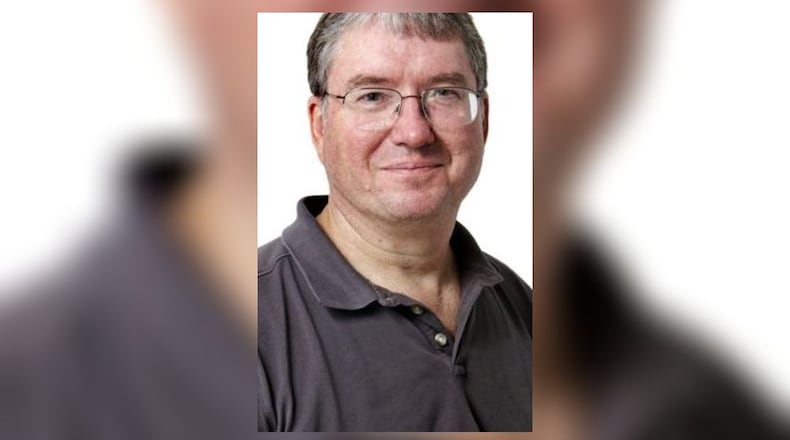You turn on the smart phone, and a satellite in geosynchronous orbit above the earth shows you the equivalent of a big arrow cut into a cornfield pointing to a dot next to the words “You are here.”
Then, you just punch in where you want to go, and – for the most part -- it tells you how to get there. True, it keeps telling you and telling you, over and over, which can strain a relationship.
But, again, for the most part, it works.
For the past six months, though, it’s been useless.
I’ve been all too familiar with where I’ve been – and where I’m likely to be.
Some weeks back, Google Earth began call our house Mudstuck, Ohio, population, 2.
And so, while I’m not happy to say it, it’s a plain fact that our most interesting trip of 2020 has been to a funeral visitation.
Though a sad occasion, it gave us a chance to get out of Mudstuck and gave me a chance to do what my older brother often advised me to do when we were children: get lost.
The funeral was in Mendon, Ohio, which is in Mercer County. The visitation was in the middle of a neighborhood in a funeral home that actually looked like a home.
My wife’s Uncle Wayne had passed away at 103 in the farmhouse he grew up in with my wife’s late mother, Ruth, one of my favorite people ever. The tiny pictures of Ruth, Wayne and Ralph in the costumes of toddlers of the period made for big smiles.
And one of Wayne’s favorite projects was on display: A model of the family homestead that, as we drove by, had my wife recalling a special moment of her childhood visits: Going for a ride on the back of a neighbor’s bicycle, which was specially outfitted in a way that, in its time, may have qualified it as a contraption.
On the way back we told one another to get lost, though together.
It started when we passed east under the bridge at I-75 where U.S. 33 turns into State Route 33 headed for Indian Lake and Columbus.
When I failed to take the first two right turns, my wife expressed a mild consternation.
But at the third opportunity, I began to carry out a strategy we had used once before. With the sun as our guide, we tried to head enough south and east steadily enough to get back to Mudstuck.
We discovered miles of lane-and-a-half roads that required lubricant so we could make it past a series of oversize pickups heading the other way.
By and large, the roads were straight and many of them had hyphenated names that left us wondering whether we were closer to first named town no longer on the map or the second.
My favorite road name on the trip was Pasco-Montra. The mantra sound alike had me thinking about someone sitting in the lotus position above the engine housing of a John Deere tractor playing finger cymbals as the sun set.
The yellowing tops of soybean fields stretched to the horizons on each side of us, as did cornstalks that had me thinking of the NBA draft. The volume of all those crops made me wonder how high Ohio Stadium would have to rise above the Olentangy to accommodate all that will be harvested in the next two months.
The truest of the country roads turned in the middle of nowhere and suddenly took us west or north when we wanted to head east and south. And although I didn’t lose my moral compass, I did spend an inordinate amount of time reassuring myself that if I was heading west and took a left, yes, I would be going south.
Like all old people in times of change, we wondered aloud whether if Gen Zers had their smart phones taken away, they’d be aware – without assistance – of which direction is up.
While happily lost, we drove by many reminders of Ohio’s short-lived canal systems, which were run out business by the railroads. Earlier in our trip we had passed, Lake St. Marys was a reservoir for the canal. In Shelby County, we saw signs for Port Jefferson, which, like Canal Winchester in Franklin Countyis in the middle of farm land.
Near the Miami-Erie Canal Feeder Canal east of Sidney the flat land we had been traveling on gave way to a road that plunged and twisted and downward with a solid forest on the left side of the road and memorable scenery to the right.
Eventually, we spilled out on Ohio 235 just north of St. Paris. I’m mildly proud that I called the road out before we got there.
At trip’s end, I wanted to head back to the feeder canal for a closer look -- and get to know more about the canal infrastructure and history around Sidney, Piqua and the rest of the state.
And it all made me feel a little less Mudstuck.
